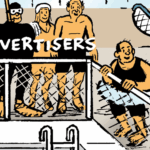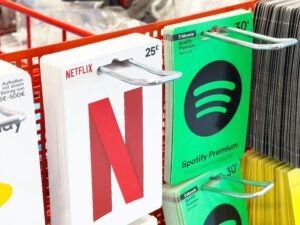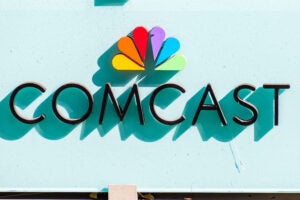“Data-Driven Thinking” is written by members of the media community and contains fresh ideas on the digital revolution in media.
Today’s column is written by Amit Dar, general manager, US, at Taptica.
Mobile attribution has evolved from connecting clicks to installs to helping marketers understand the post-install world and detect and mitigate fraud.
As the sector matures, the likelihood of further consolidation grows, along with a little more shade thrown.
The arms race will continue as attribution players fight for their piece of the pie, no holds barred. There is only a finite number of clients, and when an attribution company scores a contract, it likely won the business from a competitor.
Neck in neck
Product roll-outs demonstrate how neck and neck these players are. In a matter of a two-week period in February, for example, all five major attribution solutions announced some form of a cross-channel, cross-device product.
But if you dig into the press releases, the similarities are striking. Many used the same verbiage: “holistic, people-based attribution.”
My point isn’t to compare technologies but to illustrate that no one really does anything new. This pressure to offer whatever the other guy offers drives consolidation . Attribution players will continue to acquire other businesses to keep up. This M&A action is already happening. Apsalar and Singular merged in 2017, and Branch acquired TUNE last fall.
As the race continues, we will see more product enhancements across the board, particularly in the fraud detection space, where all players already offer some form of a fraud protection product. Adjust is especially focused on fraud and recently acquired Unbotify to strengthen this offering. We will also see companies beefing up their TV attribution solutions, specifically for OTT and CTV.
Within the next few years, we will also see large marketing cloud solutions like Salesforce and Oracle look to acquire independent mobile attribution players. This could make you quiver (another behemoth to contend with) or rejoice (now marketers have a full-funnel, cross-channel solution that incorporates a CRM).
Complex subsector
All of this can be confusing for marketers. Each solution provider is vehemently advertising its approach as the best. They are not collaborating to create universal benchmarks, and there are no IAB standards. It probably feels more complicated than it should be for those new to the space.
But it is not all bad. Competition can drive innovation and lower prices. Buyers have a lot of power in this space. They should ask questions, challenge claims and remember that since solutions are similar, decision-making will probably come down to price and deal structure.
I would love an attribution player to break out by challenging the last-click attribution model. Given the nature of this space, if one company rolled out a multitouch model in earnest, the others would either follow suit or fight like hell to prove it doesn’t make sense.
Last-touch gives full credit to the last touchpoint before a desired action, but we all know there is a much longer funnel behind most decisions. The model benefits Google, Facebook and Amazon because of their massive scale. It also incentivizes fraud. Winner takes all, so why not try to dupe the system and prove you were the last click? Finding a way to better attribute the full funnel would make the system harder to manipulate and help curb fraud.
The way things are going, there are probably minimal differences in capabilities from one attribution provider to the next. Furthermore, any slight advantage will probably be short-lived because this is a copycat segment of the market, as we just witnessed in February. With no wiggle room to stand apart, the leading players will look to consolidation to bolster their offerings.
What is most important is that every mobile marketer uses an attribution SDK, regardless of which one. If I were a marketer, I would use this arms race to my advantage and negotiate.
Follow Taptica (@Taptica) and AdExchanger (@adexchanger) on Twitter.













